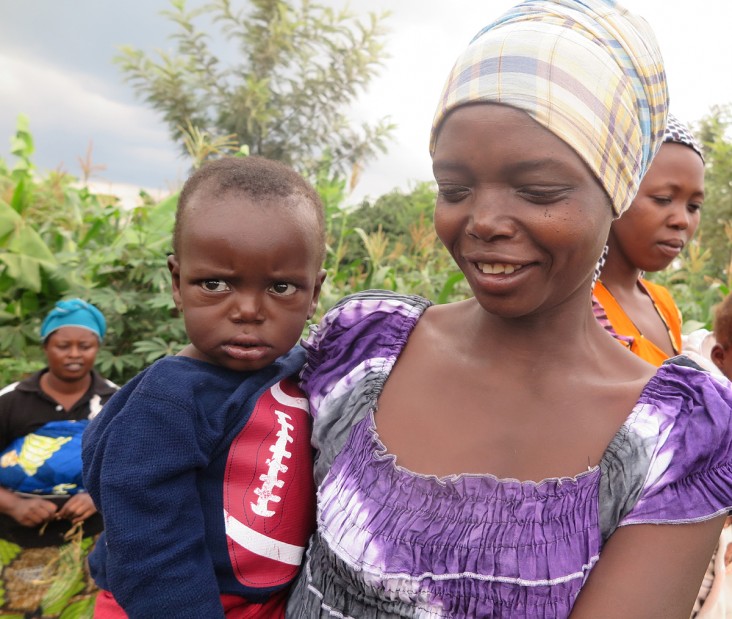
Nutrition Investments, FY16: $3,000,000
Rwanda Quick Facts
38% of children under 5 years old are chronically malnourished, or stunted1
2 million children under 5 live in Rwanda2
Since 2015, over 2,400 children have been rehabilitated from malnutrition through USAID support
Rwanda has historically faced a high burden of chronic malnutrition, or stunting, among young children. In 2005, 51% of children under 5 years old in Rwanda were stunted.3 Due to government and international efforts to eliminate malnutrition, this rate has been steadily declining. However, malnutrition in Rwanda is still high, with 38% of children under 5 stunted as of 2015. Children living in rural communities are disproportionately affected by poor nutrition; rural children under 5 are nearly twice as likely to be stunted as urban children of the same age.4 USAID is working to lower the risk of malnutrition among children ages 5 and younger in Rwanda through improving communities’ access to and understanding of proper nutrition, water, sanitation, and hygiene behaviors.
“When I was told that my son Emmanuel was suffering from malnutrition, I felt offended,” said Nyirahabimana, a mother living in rural Rwanda. “I thought I cooked so well. I used to fry most of our food, including vegetables. But my son was thin and became sick very often.”
Nyirahabimana was convinced her son was poisoned. After hearing about a USAID-funded nutrition school that had started up in a nearby community, Nyirahabimana joined with the hope that it could help her find a way to make her son, Emmanuel, healthy. It was through this school that she learned that Emmanuel was actually malnourished.
Nyirahabimana’s nutrition school focuses on rehabilitating malnourished children. Nyirahabimana attends classes that teach mothers how to cook healthy, balanced meals to provide their children with adequate nutrients. The school does not provide food. Instead, each woman brings an item from her home to contribute to cooking a meal. Because of this, women like Nyirahabimana learn how to cook healthy meals using what they have available at home.
After a few months of attending the nutrition school, Nyirahabimana was shocked by the impact these healthy meals had on her son. “My son does not become sick anymore. He weighed 20 pounds at the beginning of the program 4 months ago. Now he weighs 33. I now know that frying food doesn’t make it healthy.” Today, Nyirahabimana cooks healthy, delicious meals at home—to the delight and well-being of her family.
Investing For the Future
Since 2015, USAID and partners have established 913 nutrition schools across Rwanda. As a result of these nutrition schools, more than 2,400 children like Nyirahabimana’s son have been rehabilitated from malnutrition.
Chronic malnutrition during childhood can have major, long-term detrimental effects on children’s proper physical and mental growth and development which can lead to delayed start at school, lower gains from schooling, decreased adult wages, and reduced likelihood of escaping poverty in adulthood. By fostering proper growth and development through improved nutrition, USAID promotes healthy and happy children, families, and societies, resulting in more prosperous citizens who can produce economic gains later in life. USAID is investing now to impact the long-term health and well-being of Rwandan children.
« Back to the Acting on the Call home page
1 Rwanda 2014-15 Demographic and Health Survey. The DHS Program, March 2016.
2 Acting on the Call: Ending Preventable Child and Maternal Deaths, May 2017.
3 Rwanda 2014-15 Demographic and Health Survey. The DHS Program, March 2016.
4 Ibid.







Comment
Make a general inquiry or suggest an improvement.